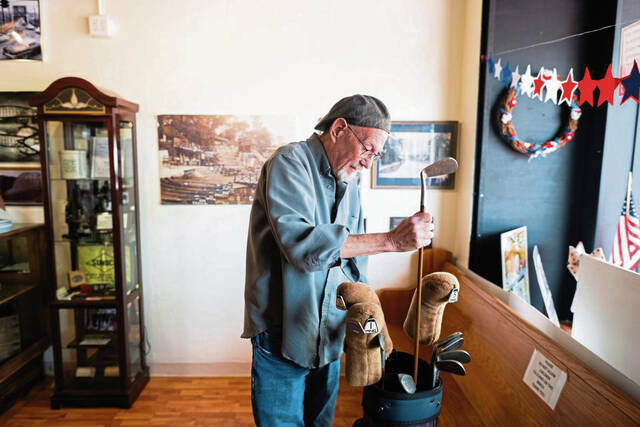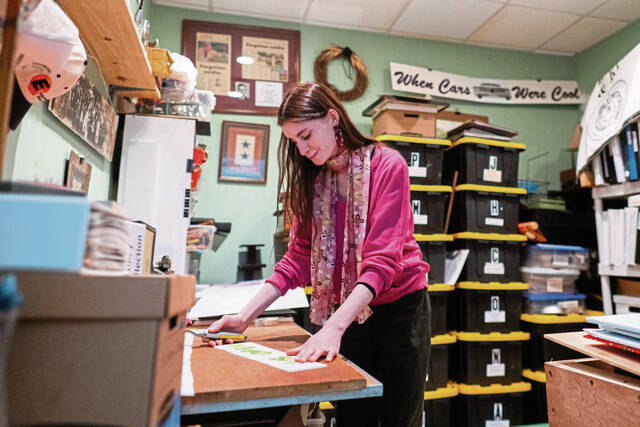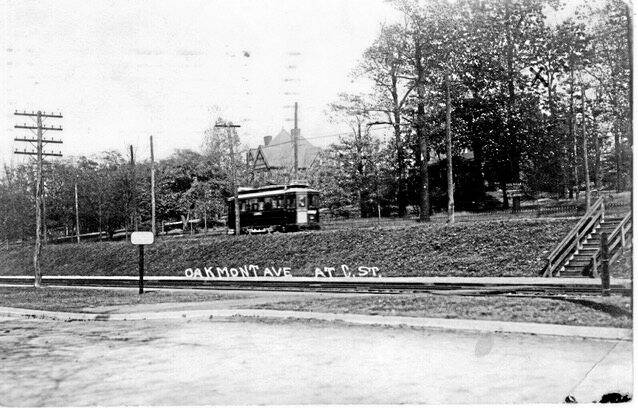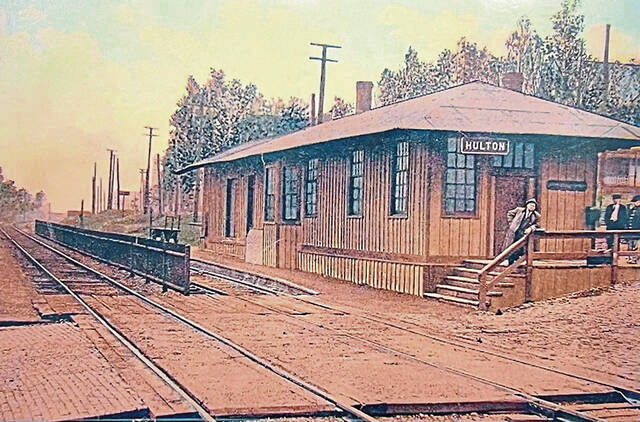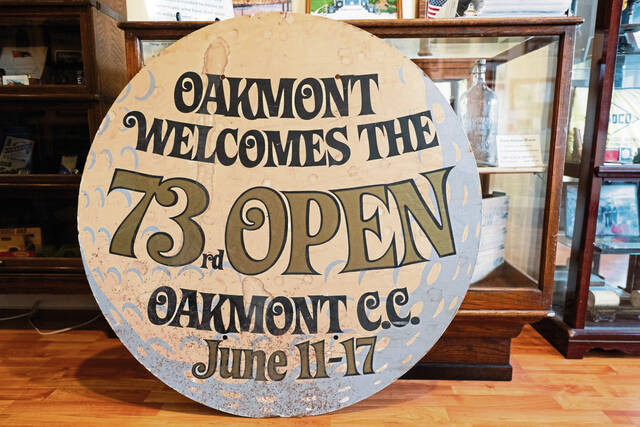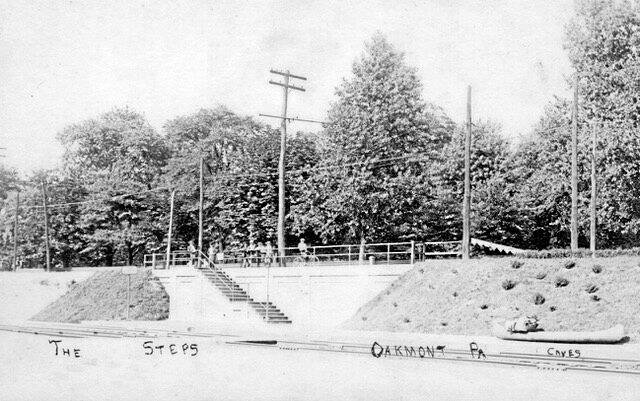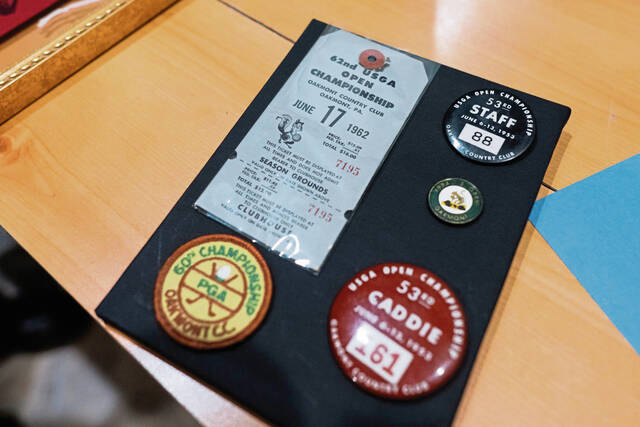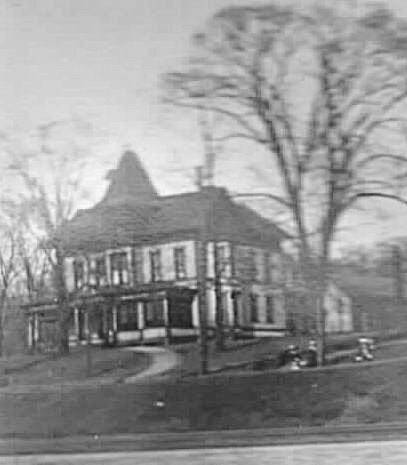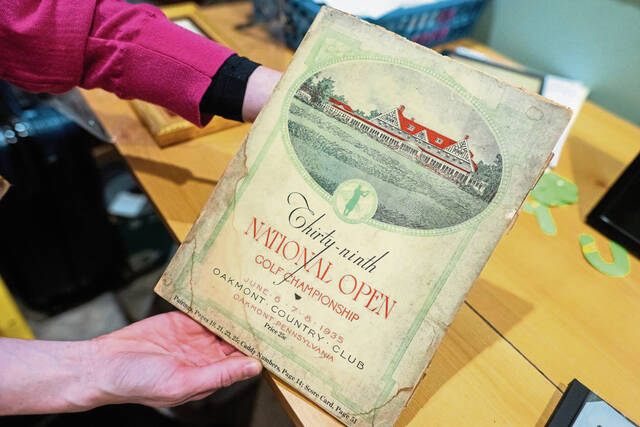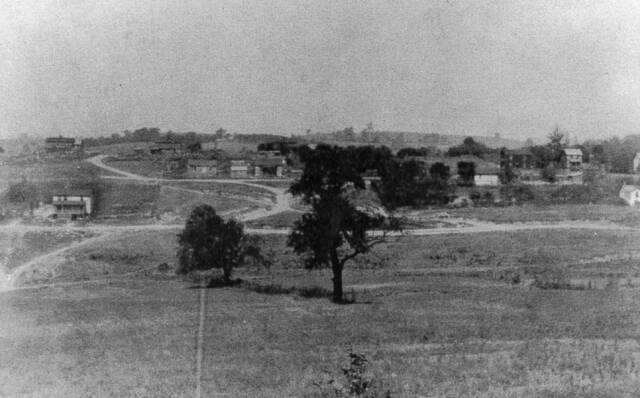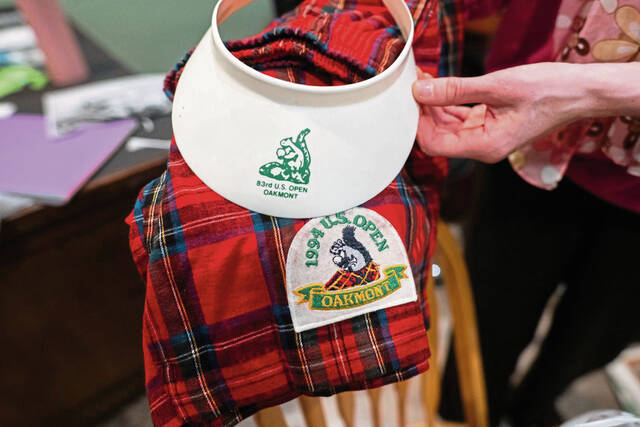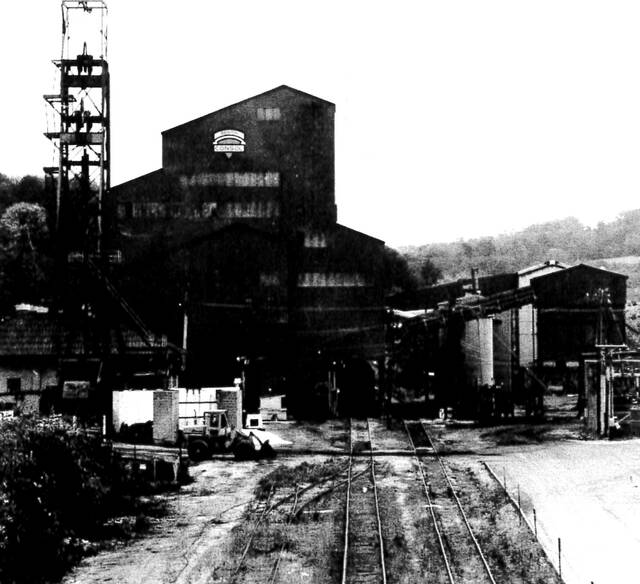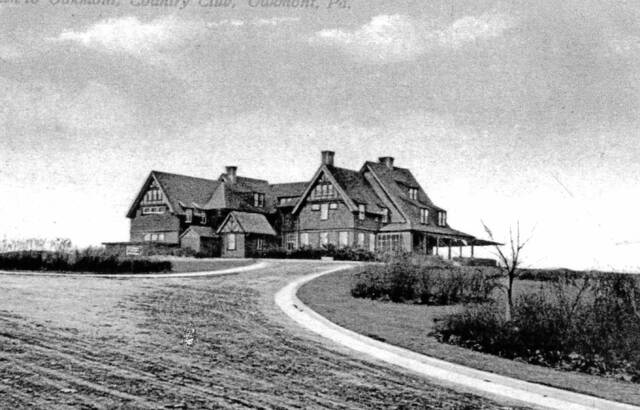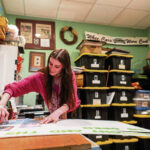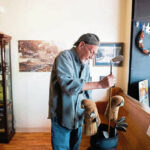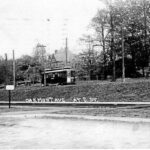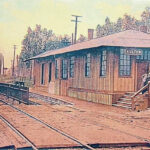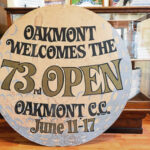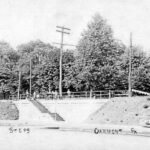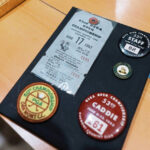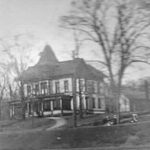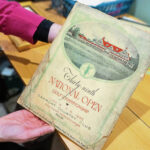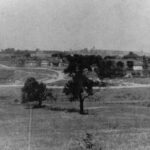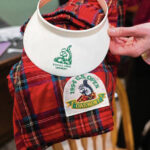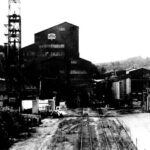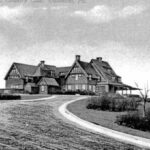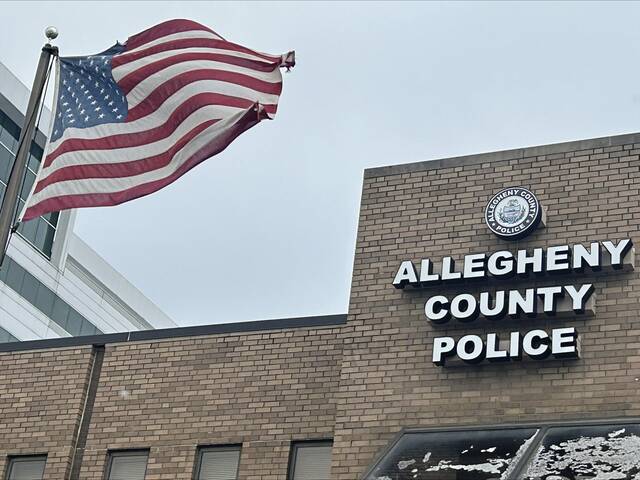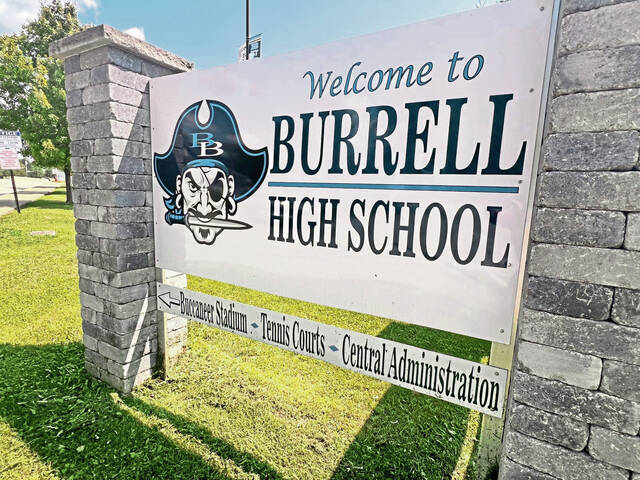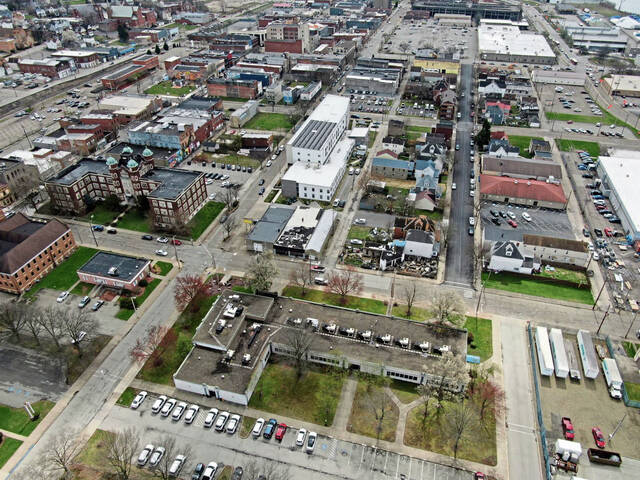Oakmont and Plum have always been able to adapt.
After almost 100 years since the first U.S. Open was hosted at Oakmont Country Club in 1927, TribLive looks at the many identities the neighboring boroughs have undertaken to become what they are today.
Although Oakmont gave its name to the now world famous country club, more than 90% of its land actually sits in Plum.
Plum remains one of the largest boroughs in the state. But at its founding in 1788, then-Plum Township included vast swathes of Allegheny County.
Oakmont has never been defined by a singular industry to carry it through the years: from a farming community, to a railroad connection to the rest of the world, a short stint as a prime resort location, to an epicenter of industry expansion.
Oakmont historian, president and founder of the borough’s historic society, Gary Rogers, 67, said the most consistent quality of the borough is its “strong sense of community.”
Oakmont, the early years
The first settlers in the area were farmers, with the Hulton, Lee and Bright families being the earliest among them, Rogers said.
When the Allegheny Valley Railroad came to what’s now Oakmont in 1853, it declared eminent domain and bought some of Jonathon Hulton’s land to build the railroad and Hulton Train Station.
Residents saw the little Village of Hulton grow up around the station, morphing the once-expansive farmland into a bedroom community.
Rogers said that in the years after the Civil War, the railroads helped make Pittsburgh accessible. He said it was only a 20- to 30-minute train ride to the city from Oakmont.
“That’s when we started to see the big mansions and the homes out here because the businessmen and the entrepreneurs lived out here — out of the smog and pollution,” Rogers said. “They could live here in the country and within half an hour, they’re in the city.”
As the area became a living space for wealthier residents, the proximity to the Allegheny River made Oakmont a popular resort destination. Travelers from the city would stay in the area during the summer to partake in boating, camping, canoeing and other popular outdoor activities.
Boating, canoeing and other clubs began cropping up in the area as the demand grew.
The name game
In 1871, the land that now belongs to Oakmont helped create Verona Borough when it was incorporated with two wards. In December of 1886, a group of Verona’s 2nd Ward residents went to the Court of Quarter Sessions of Allegheny County to request they be allowed to split from Verona and form a separate borough. The request was granted in March 1889.
After getting approval for the new borough, the residents were left to name it, Rogers said.
Residents on either end of town, those who resided in the working-class village on the northern side and those who lived in the mansions on the southern side, were split between what name to choose.
Since Hulton’s namesake was used for half of the town’s attractions, including the Hulton Train Station, the Hulton Ferry and the Hulton Post Office, people living in the Village of Hulton were partial to the name “Hulton Borough,” Rogers said.
The other option was, of course, Oakmont Borough.
Oakmont was the name of a prestigious estate in the area, a hillside of trees and one of the three train stations in the area.
“So, they held a vote,” Rogers said. “When the vote came out, it was 77 for Hulton and 28 for Oakmont.”
Rogers explained that a group of influential people who had lobbied for the Oakmont name went to a county judge and claimed the election was corrupt.
The judge declared the vote null and void and declared the new borough be named Oakmont.
“So, as a result of a corrupt judge, we got our name,” Rogers said.
The good old days
As the area’s reputation for outdoor recreation grew, so did the number of tourists. With the influx of visitors seeking entertainment, the area also became a spot for live music.
In 1915, JT Anderson, a local business mogul and charter member of one of the area’s boat clubs, built a dance club on one of his properties.
He named it The Willows Nightclub.
The Willows brought performers, dancers and revelers from all over the region. The Roaring ’20s and the introduction of jazz launched the club to even more success.
People danced until the Great Depression ravaged the leisure industry.
Industry expansion
Due to the borough’s proximity to the Allegheny River and the access to the railroad, Rogers said, Oakmont became an epicenter of industry expansion.
“You had the river barge traffic and river access and you had rail traffic,” Rogers said.
In 1891, William Scaife and Sons Co. moved its iron plant from Pittsburgh to Oakmont. The company operated in the borough until its closure in 1961, according to the Historical Marker Database.
Edgewater Steel, founded in 1916, was the nationwide leader in train wheel manufacturing.
Rogers said the first and second World Wars were a catalyst of these expansions. Edgewater Steel produced cannon barrels during World War I and rings for the aviation industry during World War II.
Scaife’s factory manufactured a number of metal tanks, compressors and bomb casings.
Other companies included Woodings-Verona Tool Works, Dexter Spring Co., Walters Manufacturing, U.S. Gypsum Co., Ingalls Ironworks and Agnew Glass, said Rogers.
“We had a mix,” Rogers said. “We weren’t just dependent on one industry or business.”
He said the wide variety of industries gave the borough the grace of a smooth transition once those businesses began to close or leave the area.
The land left by the companies was quickly claimed and flipped to become residential properties.
“We were able to pivot into what was coming,” Rogers said. “We were lucky. We always had good leadership in this town.”
A town with vision
Rogers said despite the town only being about 1.5 square miles, Oakmont offers fellowship through various outlets including nine churches, six parks and community clubs.
The Oakmont Garden Club and the Oakmont Rotary were both founded in 1927 — the same year as the first U.S. Open championship hosted by Oakmont Country Club. Scottish-born golfer Tommy “The Silver Scot” Armour took home the trophy.
Walking around, back then, visitors would’ve seen a different picture than today, Rogers said. Allegheny River Boulevard was known then as Oakmont Avenue and featured houses and a trolley line rather than a thriving business district.
“They could’ve actually rode the trolley out to go to the tournament,” Rogers said.
At that time, the boating clubs and camps could have been spotted along the river and a lot of farmland on the hilltop of the town.
Rogers said modern-day Oakmont has the draw of being a “dining destination.”
“Our restaurants draw people here constantly,” Rogers said. “We have such a wide variety of restaurants here.”
Rogers added Oakmont’s slow transition to a specialty shopping location as well.
Despite the evolution of the borough, historic pieces can still be found around the town, keeping the heritage alive.
“We haven’t lost some of that stuff. We still have cobblestone streets. We still have tree-lined streets,” Rogers said. “Progress hasn’t wiped out the heritage of this town.”
He said the ever-changing identity of the borough can be credited to the borough’s leaders, whether they’re elected, business or community leaders.
“We have people with vision here,” Rogers said.
Plum — older and larger
Plum was founded two months after Allegheny County itself. Several of today’s municipalities, including what is now Monroeville and parts of Verona, split from what was Plum Township throughout the 19th century.
For much of its history, Plum was a mainly agricultural hub with some industry along the Allegheny and several active coal mines, according to Frank Kordalski, the author of “Images of America: Plum Borough” and an archivist for the Allegheny Foothills Historical Society.
Among the more prominent mining operations were the Springdale Mine in Logans Ferry Heights — which remained in operation until the 1960s — and the Renton Mine, which only shuttered in the 1980s.
Throughout the period, railroads were vital for carrying goods and people throughout the region. The Plum Creek Line, referred to as “Old Plummy,” ran from Verona to Plum’s Unity section, playing an important part in the area’s development.
Though the area was governed by a single body, Plum was more of a collection of small communities — including Unity or New Texas — than a consolidated borough like it is today, according to Kordalski.
It was only around the turn of the 20th century that something like a unified Plum identity came to be, he said.
Taking shape
In 1903, Oakmont Country Club emerged in Plum. It was named for nearby Oakmont because it offered the nearest train station to the course, according to the club’s curator of collections David Moore.
At the time, Moore said, visitors would get off along what is now Allegheny River Boulevard and take a horse-and-buggy taxi up the hill to the country club to golf, often unknowingly crossing the municipal border.
“It’s always a running joke around here that it should be called the Plum Country Club,” he said.
Kordalski said the club not only provided an economic boon to Plum but also integrated itself into the area’s identity as the U.S. Open and other golf tournaments became increasingly popular over the decades.
“It gives people a sense of pride that this is literally in their backyards,” Kordalski said.
Another integral part of the Plum identity, he said, was the development of the Plum School District.
Although one-room school houses had existed in the area for more than a century, the first high school in then-Plum Township was formally dedicated in October 1940, according to the district’s website.
Following World War II and broader trends of suburbanization throughout the country, Plum began to rapidly develop in the 1950s.
Growth and development
It was also during that decade that Plum Township became Plum Borough.
Under state law, a neighborhood can secede from a township to a borough but not from one borough to another.
When White Oak Level, a neighborhood near the country club, joined Oakmont, Plum rapidly sought to adjust its municipal status to keep another neighborhood, East Oakmont, from doing the same, Kordalski said.
By 1956, the process was complete, and Plum remains a borough to this day.
A guiding force in the rapid development of the new borough, according to Kordalski, was Anthony “Tony” O’Block, who served as Plum’s first mayor in a tenure that would last more than three decades.
Founder of highway building firm O’Block Construction, the mayor presided over an era that led Plum out of its rural character and into its more familiar suburban identity.
“I think people still hold (O’Block) in pretty high regard for kind of navigating the community for those three-plus decades,” Kordalski said.
Between 1960 and 1970, Plum’s population more than doubled from around 10,000 to more than 21,000 residents, according to census data.
Many of Plum’s large-scale housing developments were built around this time, including Holiday Park, which began construction in 1959.
Role of the tournament
Throughout its development, Plum and Oakmont have consistently adapted to host the ever-growing U.S. Open, Moore said.
In the midst of its development, Plum hosted the legendary 1962 Open, which saw young, rising star Jack Nicklaus defeat Arnold Palmer, already a star and Western Pennsylvania legend.
“It leads to a huge influx of tax money and interest in the area,” Moore said. “I think it’s a big reason the USGA wants it to come back here every decade, and the community wants it to come back every decade.”
Players and visitors, he said, often rent homes in Plum near the club during the week of the Open and patronize local establishments in Plum and Oakmont.
The tournament has also affected infrastructure improvements in the area, such as construction of the new Hulton Bridge and the implosion of its predecessor just before the 2016 U.S. Open, he said.
With the course designated an “anchor site” and tournaments planned as far out as 2049, it appears the communities will continue to grow with Oakmont Country Club.
“I think it’s a testament to the past of what this event has meant to this community and this club for the last 100 years and what it will mean for this community and this club for the next 100 years,” Moore said.



